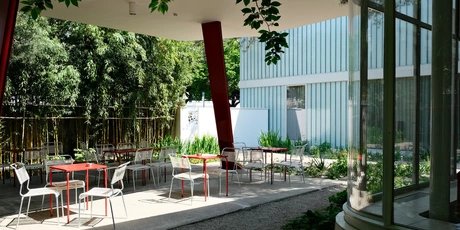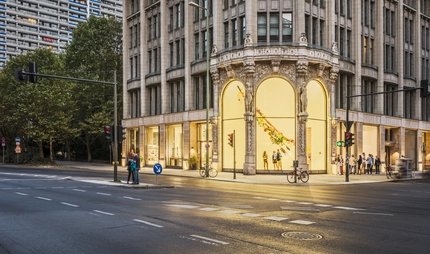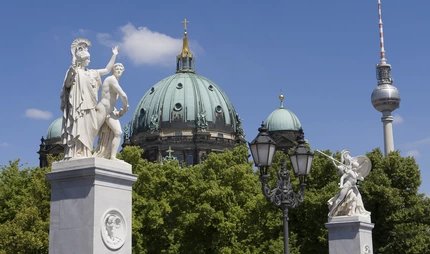
Gallery ‘Die Tankstelle’
From petrol pump to art oasis
Berlin is known for its creative revitalisation: empty spaces are transformed into stages, old industrial buildings into galleries. A new highlight has joined this tradition since May 2025: The petrol station on the site of the former Kleines Grosz Museum in Bülowstraße.
Where petrol used to be pumped, you can now experience contemporary art. The historic site will also delight you with its pretty garden café and well-curated bookshop. The petrol station is an exciting new address for art-loving Berliners and visitors with a special atmosphere that invites you to linger.
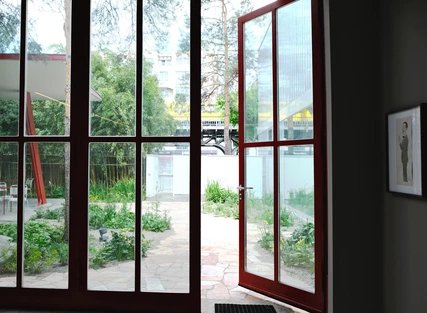
What's currently on show?
The Pace Gallery, one of the most renowned galleries for contemporary art in the world, is opening the exhibition "Reverse Alchemy". On display are works by Jean Dubuffet, Jean-Michel Basquiat and Robert Nava - a dialogue between art history and the present.
In parallel, the Galerie Judin is presenting an impressive show of the work of Tom of Finland, the Finnish artist Touko Laaksonen, known for his powerful, homoerotic drawings, which have long been considered icons of pop culture.
Garden, café and bookshop
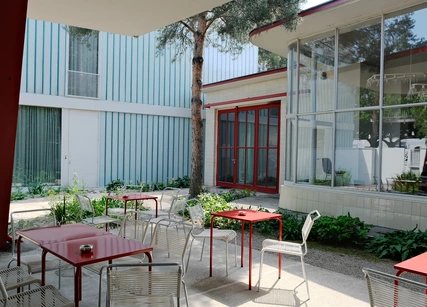
The cultural programme is complemented by a stylishly designed café and a bookshop from the "Die Zeit" publishing group, which offers an oasis of calm and also invites visitors to browse and discuss. Incidentally, the café and bookshop space is part of a Germany-wide cultural project by the Zeit publishing group, focussing on "read, see, speak".
Who is behind the project
The Swiss gallery owner Juerg Judin, who acquired the site in 2005 and has since rethought it with creative vision, is behind the project. The Little Grosz Museum was already his initiative. With the new concept, he is building on the history and opening up new horizons at the same time: the petrol station is not only intended to be an exhibition space, but also a social and cultural meeting place.
History & Background
The striking architecture dates back to 1956: once a Shell petrol station with a modern post-war design, the conversion into a residential and studio building was awarded the Architecture Prize in 2009.
In 2022, the architectural icon from the 1950s was rededicated as the Kleines Grosz Museum - a place dedicated to the critical spirit and work of Berlin artist George Grosz. After its closure at the end of 2024, it was converted to its current multi-purpose use. The design preserves historical elements combined with urban flair: a garden with bamboo, pine trees and a carp pool invites you to pause for a moment - in the middle of bustling Schöneberg.
Sights around Bülowstraße
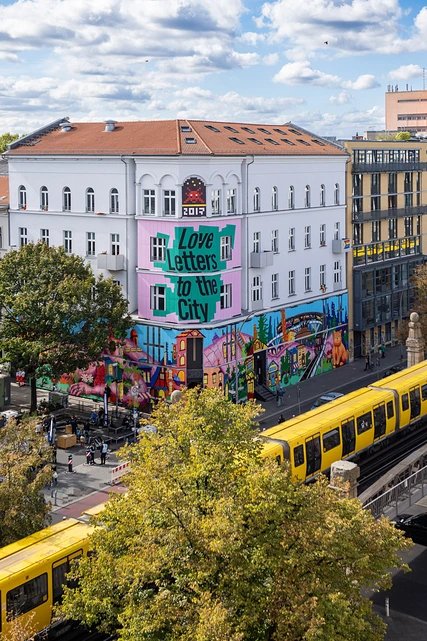
The URBAN NATION Museum is another unusual museum in the vicinity of the Kleines Grosz Museum. This one is dedicated entirely to Urban Art. Take a walk along Bülowstraße to discover numerous other murals and street art artworks.
Other highlights in the neighbourhood:
- the galleries of Potsdamer Straße
- the Neue Nationalgalerie
- the Kulturforum Berlin
How to get there
We recommend using public transport.
- U-Bahn: U1, U2, U3 - stop Nollendorfplatz or Bülowstraße
- Bus: Lines M19, M85 - stop Potsdamer Brücke
- Bicycle: Numerous parking facilities directly on the premises
Accessibility: The building is largely at ground level, wheelchair access is available.
